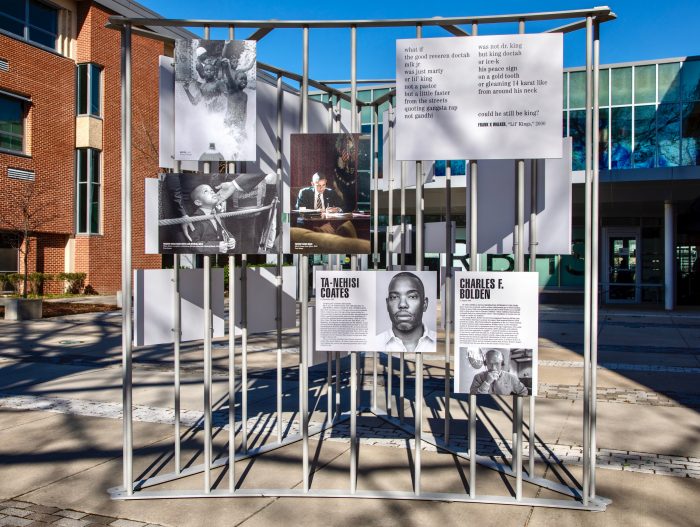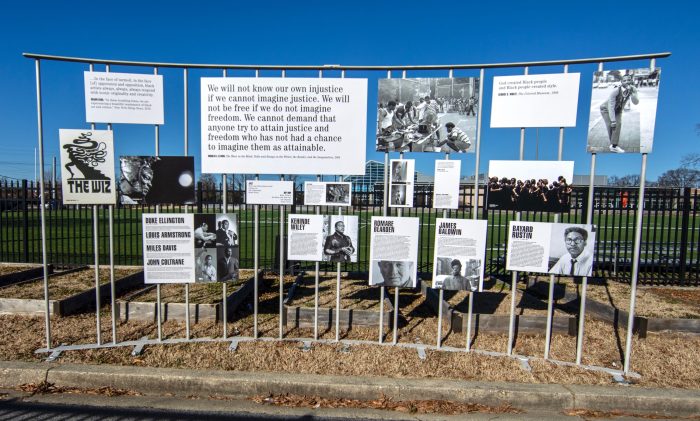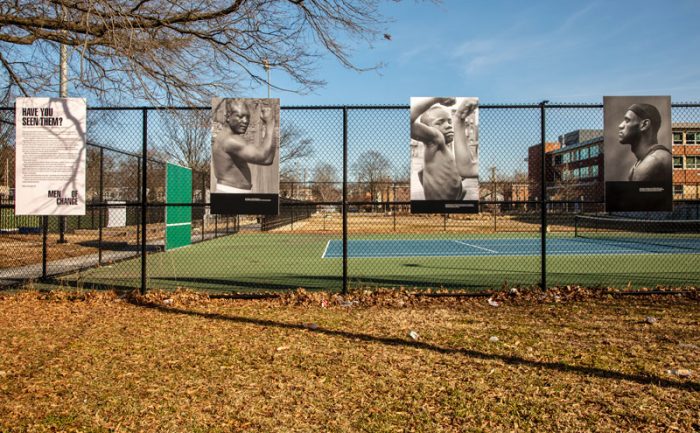Men of Change: Taking it to the Streets!
Even though the museum itself remains closed, the Anacostia Community Museum has opened a new outdoor exhibition. Men of Change: Taking it to the Streets. Susan Rosenvold talked with Andrea Jones, ACM Associate Director of Education, about the project.
Andrea Jones joined the Anacostia Community Museum as Associate Director of Education in October 2020, just before the museum had planned to open a new main gallery exhibition – Men of Change: Power. Triumph. Truth. However, the pandemic had its own plans. Just as Jones was settling into her new job, ACM was rethinking upcoming exhibitions as museums remained closed.
As it turns out, welcoming Jones to ACM was a perfectly timed fortuitous circumstance. As a consultant, she had been writing and speaking about adapting museum experiences to the needs of audiences during the COVID era. With the museum’s history of community responsiveness, and Jones on board, all of the stars seemed aligned to do something dynamic.
The result was a reimagining of the exhibition in a way that would make it accessible. Men of Change: Taking it to the Streets was the result, “featuring the vibrant stories of more than two dozen African American male leaders” and designed to “create a stunning visual presence of Black male positivity,” at a time when optimism and inspiration is needed, according to Jones. The exhibition opened Feb. 1 and is currently the only new exhibition on view that can be visited in person, because it was redesigned to be installed outdoors. With the exception of Smithsonian Gardens, all other museums and public facilities are currently closed due to the pandemic.

Pivoting in this way to bring the exhibition to life meant creating new partnerships with organizations in the Deanwood section of northeast Washington, D.C., including Ron Brown College Preparatory School and the D.C. Department of Parks and Recreation. The exhibition is situated on the school’s two-block square campus, framed by 48th, 49th, Meade, and Quarles Sts. and Minnesota Ave. and bisected by Nash St.
An adaptation of the Smithsonian Institution Traveling Exhibition Service’s Men of Change: Power. Triumph. Truth, the exhibition outreach project includes environmental projections that will illuminate local building facades from dusk until midnight; an audio tour set for release Feb. 12; virtual public programs via Zoom; special programming for Ron Brown’s student body in March (25 percent of the student body will be attending school in person beginning in March); and additional programs in development with DC Public Library online.
Jones especially appreciates the partnership with Ron Brown College Preparatory School because the school features a Restorative Justice program aimed at at-risk students. “The culture and mission at this school really amplifies the messages in the exhibition,” says Jones. “It’s like an incubator for future Men of Change.” ACM has scheduled several exhibition-related programs with the students of Ron Brown, including a unique opportunity to meet some of the iconic men featured in the show.

In March, an additional feature will be added—a Deanwood Men of Change display, an interactive component that will invite visitors to write and hang tags with words of gratitude for the Men of Change in their own lives. Together, these tags and the Deanwood nominations will ground the exhibition in the place where it is hosted. Jones hopes this will help people to understand that a person doesn’t have to be famous to make a difference in someone else’s life. We can all be “people of change.”
Jones brought the idea of hanging wooden tags on a fence from a public exhibit she started in her own neighborhood before coming to the Smithsonian. The theme of that exhibition, entitled “Community Lost and Found” encourages neighbors to share what they’ve lost and found due to COVID-19. She asked local artists to design shadow boxes that she installed on the fence along her yard and then produced tags for locals to write their stories about coping with COVID, which are also hanging on the fence. The Public Broadcasting Service heard about the exhibition and featured it on their website in December.

Jones is very excited about this completely outdoor exhibition being brought to the Deanwood neighborhood at a time when positivity and recognition is needed. The exhibition gives the Smithsonian an opportunity to engage intimately with the local community and provide resources for students at Ron Brown High School despite the pandemic. Those interested in the experience may visit the Deanwood exhibition between now and May 31, 2021. The audio tour (available Feb. 12 from wherever you download your podcasts) begins at the “Myth-breakers” installation location at the Ron Brown Hight School at 4800 Meade Street NE in Washington , D.C.
For more information about the exhibition, visit the Anacostia Community Museum website and visit ACM’s social media pages on Facebook, Twitter, Instagram and YouTube.
Susan Rosenvold is a Volunteer Services Coordinator with the Office of Visitor Services and Volunteer Management. She coordinates the OVS Call Center program, providing general information support to staff and outside callers on behalf of the Smithsonian Institution.
Posted: 10 February 2021







